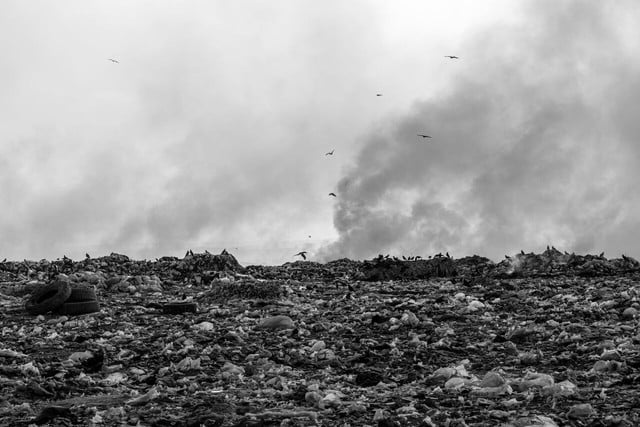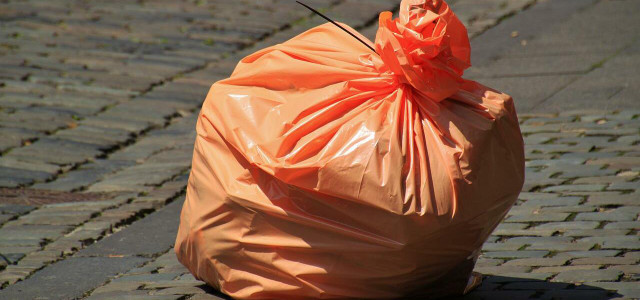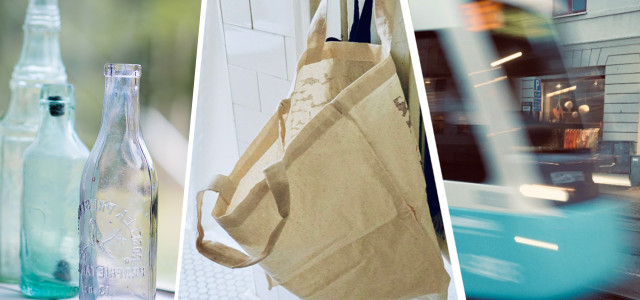Learn the truth about black plastic and how it can hurt your health and the environment. Find practical, eco-friendly alternatives to help you make smarter, greener choices.
The rate at which the US recycles plastic waste is alarming: only 8.7%. We send nine times as much plastic to landfills. One of the culprits for this dismal statistic is black plastic. That means black plastic, omnipresent in our daily lives and in plastic packaging, has become a growing concern for both the environment and public health.
Below, we’ll unveil the issues surrounding black plastic, from recycling challenges and environmental hazards to potential health risks. Moreover, we’ll explore promising alternatives that can help us transition to a more sustainable future. By shedding light on the hidden dangers of black plastics and encouraging responsible choices, we can collectively work towards a cleaner, greener and safer world.
What Is Black Plastic?

(Foto: CC0 / Pixabay / devrawat21)
Black plastic is colored by the addition of carbon black, a pigment derived from the incomplete combustion of fossil fuels. This material is commonly used for a wide range of applications, including packaging, electronic devices, automotive parts and everyday household items.
Types of Black Plastic
There are several types of black plastic, each with unique properties and applications. Common varieties include:
- Polyethylene (PE): Often used for food packaging and disposable containers, polyethylene is a lightweight, flexible and chemically resistant plastic.
- Polypropylene (PP): With a higher melting point than PE, polypropylene is frequently used for automotive parts, reusable containers and microwave-safe food packaging.
- Polystyrene (PS): Known for its insulating properties, polystyrene is used in disposable food packaging, like foam takeout containers and coffee cups, and protective packaging for electronic devices.
The Production Process
The production of black plastic begins with the extraction of fossil fuels, which are then processed into raw materials for creating various types of plastic resins. During manufacturing, carbon black pigment is added to these resins, giving the plastic its characteristic dark color. This pigment provides an appealing appearance and offers increased UV resistance and durability.
Can Black Plastic Be Recycled?



(Foto: CC0 Public Domain / Unsplash - collab media)
Black plastic presents unique recycling challenges. Even if you avoid common recycling mistakes and sort your waste carefully, not all will be recycled. Recognizing these issues is vital for developing solutions to minimize their environmental impact.
Recycling Issues
- Difficulty sorting due to carbon black pigment: One of the significant issues with black plastics is that their dark color makes them difficult to sort during recycling. Most recycling facilities use near-infrared technology to identify and sort different plastics. Still, the carbon black pigment in black plastics absorbs infrared light, preventing the scanners from accurately identifying them. This leads to a higher likelihood of contamination in recycling streams. As you can imagine, this isn’t doing the environment any favors.
- Contamination in recycling streams: When black plastics are incorrectly sorted or mixed with other plastics, they can contaminate the recycling stream, reducing the quality of the recycled material. This makes the recycling process less efficient and decreases the value of the recycled products, leading to lower demand for recycled materials.
- Lower recycling rates than other plastics: Due to the difficulties in sorting and the potential for contamination, black plastics have a lower recycling rate than other plastics. This means more black plastic ends up in landfills or incinerators, contributing to environmental pollution and greenhouse gas emissions.
Black Plastic's Environmental Hazards



(Foto: CC0 / Pixabay / Claudia14)
Black plastics are more than just a recycling challenge; they also contribute to a range of environmental hazards that often go unnoticed. The most significant problems are:
- Leaching of toxic chemicals: Like other plastics, black plastics can leach harmful chemicals into the environment. However, the carbon black pigment in black plastic has been associated with an increased risk of releasing hazardous substances, such as heavy metals and endocrine disruptors, which can have detrimental effects on ecosystems and human health.
- Microplastic pollution in waterways and oceans: Over time, plastic waste can break down into smaller particles called microplastics. These tiny particles turn into ocean pollution and are easily ingested by marine life, entering the food chain and causing harm to aquatic ecosystems. Black plastics contribute to the growing problem of microplastic pollution in the ocean, posing a threat to both marine life and human health. Microplastic is even in our food.
- Greenhouse gas emissions from production and disposal: The production, use and disposal of black plastics contribute to greenhouse gas emissions, which exacerbate climate change. From the extraction of fossil fuels to the incineration of plastic waste, the life cycle of black plastics has a significant carbon footprint.
Health Concerns: The Hidden Risk of Black Plastic



(Foto: CC0 / Pixabay / qimono)
Black plastic also presents potential health risks for consumers and communities. Gaining insight into these health concerns allows us to better understand the full impact of black plastics and emphasizes the need for safer alternatives and practices to protect public health.
Health Concerns
- Potential toxic chemicals in food packaging: Black plastic is often made using old electrical appliances. As a result, black plastic often contains — among other things — dangerous chemical substances such as lead, mercury and cadmium. When black plastics are used for food packaging, there is a risk that harmful chemicals can migrate into the food, especially when the packaging is exposed to heat or sunlight. This can pose health risks to consumers, including potential endocrine disruption and increased exposure to heavy metals. Lead, for example, can cause serious physical harm, from anemia and hypertension to nerve, kidney and brain damage.
- Air pollution from incineration: When black plastics are incinerated, they release toxic chemicals and greenhouse gases into the atmosphere. That means the use of black plastic is a major human activity that leads to air pollution. This pollution can have harmful effects on human health, contributing to respiratory issues, heart disease and even cancer.
There have been some improvements in the recyclability of black plastics. In 2016, German scientists developed a method for sorting black plastics. However, the technology is still not widespread.
What Are the Alternatives?



(Foto: CC0 Public Domain / pexels - Lucas Allmann)
The problems associated with black plastics call for the exploration of viable alternatives and innovative solutions that can help mitigate their negative impact on the environment and human health. Reducing black plastic and getting a sustainable grip on the global plastic waste problem requires action from all sides — policymakers, manufacturers and consumers.
The best choice is to go plastic-free, but until that’s possible, here are some key considerations and alternatives.
Eco-friendly Materials
- Bioplastics: Bioplastics are made from renewable resources like wheat straw, cornstarch, sugarcane, or algae and can serve as an eco-friendly alternative to traditional plastics. Some bioplastics are also biodegradable or compostable, reducing their environmental impact.
- Paper-based Packaging: Paper-based packaging, made from sustainably sourced materials, can provide an environmentally friendly substitute for black plastic food packaging. Paper packaging is typically easier to recycle and can even be composted in some cases.
- rPET Plastic: Encourage the use of rPET plastics that are made entirely from recycled products and are a more sustainable choice overall.
Technology Solutions
- Improved Recycling Technology for Sorting Black Plastics: Investing in new technologies that can better identify and sort black plastics will help increase their recycling rates. For example, near-infrared (NIR) technology is being developed to overcome the limitations of traditional optical scanners, allowing for more accurate sorting of black plastics.
- Infrared Sorting Systems: Some recycling facilities have begun implementing infrared sorting systems that can more effectively identify black plastics. By improving the sorting process, these systems help reduce contamination in recycling streams and increase the overall efficiency of recycling.
Consumer Actions
- Get Into Precycling: Precycling helps you avoid accumulating plastic waste in the first place. This practice is an example of conscious consumerism that’s easier on your wallet and the environment.
- Supporting Brands That Use Eco-Friendly Packaging: As consumers, we can make a difference by choosing to purchase products from brands that prioritize sustainable packaging solutions. By supporting these companies, we encourage the industry to adopt more environmentally friendly practices. However, be mindful to avoid companies that participate in greenwashing, or giving lip service to the environment without actually doing anything to make their processes more sustainable.
- Reducing Single-Use Plastics: Reducing our overall plastic consumption, particularly single-use plastics, is essential in mitigating the environmental impact of black plastic. Opt for reusable products whenever possible and minimize the use of disposable items. An easy-to-implement first step is switching to plastic wrap alternatives in the kitchen.
- Proper Recycling and Disposal Practices: Educate yourself on your local recycling guidelines and follow them closely. Proper recycling and disposal practices can help minimize the environmental impact of black plastics and other waste materials.
- Make Small, Sustainable Changes in Every Room: You can start with something small and easy, like learning how to freeze food without plastic, then graduate to ridding entire rooms in your house of plastic. For inspiration, check out our guide, Zero Waste Bathroom: Tips for Using Less Plastic.
By embracing these alternatives and implementing responsible practices, we can move towards a world that is less reliant on black plastics and more focused on preserving our planet for generations to come.
Of course, sometimes these little changes can seem futile. But remember, every action you take makes a real difference. Here are some more easy tips to help you on your way towards a zero-waste lifestyle.
Read more:
- Closed-Loop Recycling: How It Works
- Plastic-Eating Mushrooms: They’re Real (& Some Are Edible)
- 14 Hidden Ways Technology Addiction Affects Your Life
Do you like this post?










